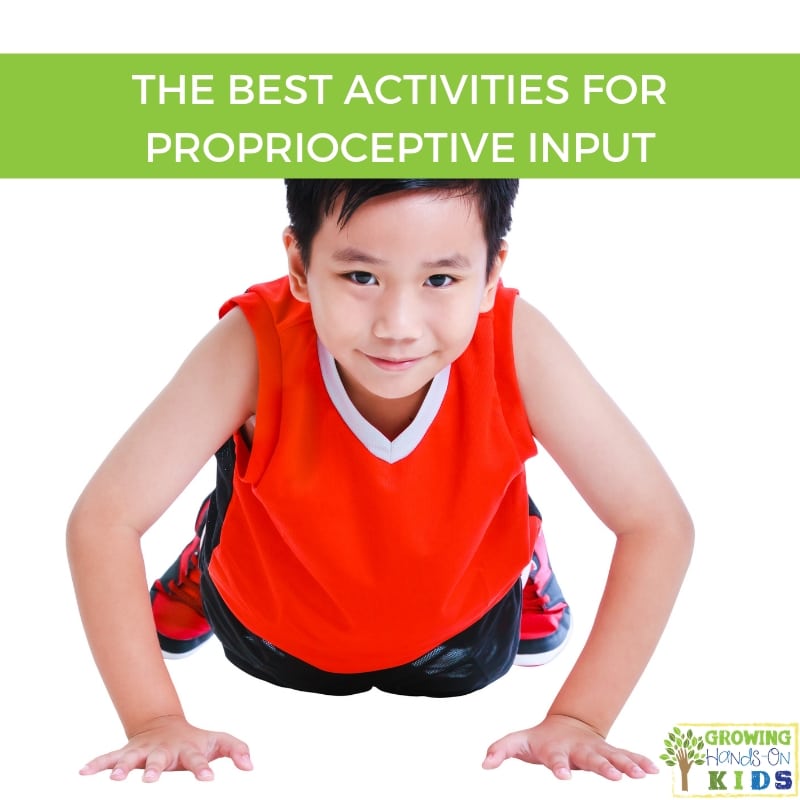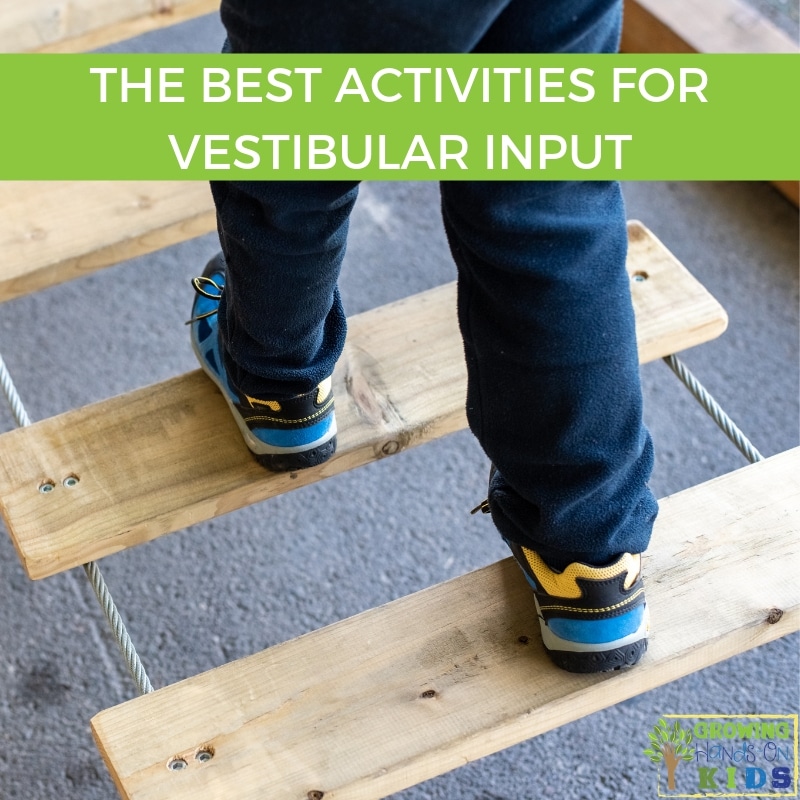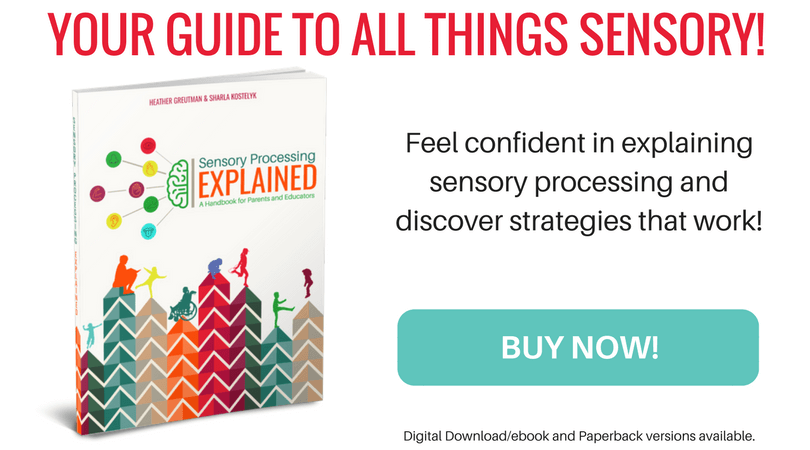The Best Activities For Proprioceptive Input: A Complete Guide
Affiliate and Referral links are used below to promote products I love and recommend. I receive a commission on any purchases made through these links. Please see my disclosure policy for more details. As an Amazon Associate, I earn from qualifying purchases.
Proprioception is one of those eight senses that not everyone knows about. If you have a child struggling to focus, sit still, or attend to a task, this is one of the sensory systems you want to address. Today I am sharing some of the best activities for proprioceptive input.
Post updated March 2023.
Best Activities for Proprioception – Table of contents
What are proprioceptive input activities, why does a child need them and how can you provide them? Here is a complete guide, with everything you need to know.
Before we get to the list of activities, let's review what proprioception is for those who may not know.
What is Proprioception?
There's a running joke about people having a 6th sense, but in reality, you actually have 8! Proprioception is one of those eight major senses.
Proprioception is the sense of knowing where your body is in space and in relation to objects around it. Being able to type without looking at the keys, raising your arm above your head, or touching your nose while your eyes are closed is your proprioception system at work.
Proprioceptive input comes in through the muscles, joints, and tendons of the body. The brain takes in this information and is able to process how your body needs to move in order to complete tasks.
You may also see it referred to as kinesthesia.
Signs of Struggles with the Proprioceptive Sense
How do you know if your child is struggling with proprioceptive input or not?
Here are some signs of struggles with proprioception:
- poor coordination – they move awkwardly or stiffly
- poor body awareness – knowing where their body or body parts are in space
- difficulty grading amount of pressure – using excessive force on an object (such as
breaking a pencil or crayon with writing or coloring) - may push, hit, bite, or bang into other children
- avoid or crave jumping, crashing, pushing, pulling, bouncing, or hanging
- chew on clothing or objects more than other children (remember this is age appropriate
at certain times in the development of younger children, typically age 3 and under) - have to watch what they are doing (such as when writing, walking or running)
Heavy Work and Proprioceptive Sense
You may see terms such as heavy work when looking for proprioception activities. Heavy work is another term that is used to describe the type of activities that involve proprioception.
Since the input comes in through the muscles and joints, activities that involve engaging in this sense are often pulling or lifting heavy objects. This can have a calming or alert effect on children who need this input.
You can get more ideas for heavy work here.
The Vestibular System and Proprioception
The vestibular system and proprioceptive system are very much related. Both are the systems responsible for movement, while the vestibular system focuses on balance.
The vestibular system is located in the inner ear and lets your body know when it is moving and what type of movement it is experiencing, whether upside down, sideways, etc.
As we already learned, proprioception is input from the muscles and joints and helps your body know how to move in relation to things around or the environment. You need both the vestibular and proprioception system working for optimal movement, motor skills, postural control, etc.
You can read more about the vestibular system here.
Sensory Seeking vs. Sensory Avoiding
Children can be sensory seekers or sensory avoiders for different types of input. A seeker is a child who craves and needs that type of input in order to focus and function at optimal levels. An avoider would be a child who cannot tolerate this input and avoids it in order to feel safe a secure.
Children can be a mix of seekers or avoiders depending on the type of input, sensory system, or even activity. And each child will react differently so it's important to follow your child's lead and look for signs of overwhelm or overload during sensory activities.
The Best Activities for Proprioceptive Input
Here is a list of great activities to get started with proprioceptive input. I'll also make notes on which activities are best for seekers and avoiders.
|| weighted lap pads or vests and lycra body socks
You can purchase these or make your own DIY options. Here are a few suggestions. These can work for kids who are seekers or avoiders.
How to Make a DIY Weighted Vest – this is a round-up of 10 different ideas.
If you would rather purchase a weighted vest, I like to recommend Fun And Function or Therapy Shoppe.
|| bean bag chair to sit in
Having adaptive and various seating options, especially in a classroom is great for kids who need extra proprioceptive input to focus and attend.
|| heavy work activities
I have lots of heavy work activity suggestions for you. These are great for proprioceptive sensory seekers.
25 Heavy Work Activities for Home
12 Heavy Work Activities for School
25 Heavy Work Activities for Kids
|| swimming
Swimming is a great option for seekers and avoiders.
|| karate
|| climbing
Rock climbing, climbing up a slide or on playground equipment, or monkey bars are all great options.
|| trampoline
You can use a mini-trampoline for toddlers or have one of the larger ones in your yard. Be aware of any safety issues when using trampolines and always have adult supervision. The jumping gives intense proprioceptive input through the muscles and joints.
|| house cleaning chores
Sweeping, vacuuming, dusting, and washing windows are all great chores for proprioceptive input. This is also a great way to have avoiders get some proprioceptive input.
|| carry groceries
Also pushing the grocery cart for older kids is a great proprioceptive activity. Our grocery store sometimes has child-size carts, if you are feeling brave! 😉
|| chair push-ups or sit-ups
This is a great option for the classroom for brain breaks.
|| wash the car
In order to get the proprioceptive input for this activity, have the child use a cloth or a brush with a handle to hand wash the car.
|| roll and push a ball
This is a great one for proprioceptive avoiders. Use a weighted ball to get a little more intensity with this activity.
|| yoga stretches
We love following Cosmic Kids Yoga on YouTube for lots of great yoga poses and stories. Kids Yoga Stories is also a great option.
|| pretend to be different animals and move like the animal (hop like a rabbit, slither like a snake, etc)
I have a free farm animal movement card set available on my website here.
|| chew bubble gum or other scented gum
You may not realize it, but your jaw is a great way to get proprioceptive input, especially for those who are constantly chewing. Chewing gum or crunchy foods is a great way to get this input for chewers.
I hope this gives you some ideas on how to incorporate proprioceptive activities into your child's day.
Free 8 Sensory Systems Handouts
You can get a free 8-page handout on all sensory systems, plus my free email series when you put your email address in the box below. I'll also be sending you more child development tips, tools, and strategies in other emails. You can unsubscribe at any time.
You May Also Like:

Heather Greutman, COTA
Heather Greutman is a Certified Occupational Therapy Assistant with experience in school-based OT services for preschool through high school. She uses her background to share child development tips, tools, and strategies for parents, educators, and therapists. She is the author of many ebooks including The Basics of Fine Motor Skills, and Basics of Pre-Writing Skills, and co-author of Sensory Processing Explained: A Handbook for Parents and Educators.




